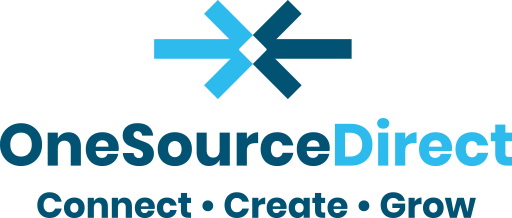
Key Highlights
- To make your marketing work well, you need to know your target audience. This helps you make better plans and talk to potential customers.
- You can use market research and demographic information to learn more about people. This helps you build buyer personas so you can reach certain individuals.
- When you know the difference between a target audience and a target market, your marketing messages can be more focused.
- It helps to split your audience by things like what they like (psychographics) and how they make purchasing decisions. This way, you can speak to what your customers need.
- Making campaigns just for one group helps more people see your brand and feel loyal to it.
- Working in a smaller area, or niching down, helps you get qualified leads. This also gets you more people interested by using ideas just for them.
Introduction to Target Audience Discovery Process
Every business that does well knows its target audience. The people who may buy from you help shape your marketing strategy. If you do not talk to the people who want what you offer, they may not care about what you say. You need to make your branding reach the right people. When you do this, your campaigns will go to the right people and give better results. In this blog, you will find steps that help you know, study, and connect with the target audience that means the most to your business.
Defining Your Target Audience

Your target audience will be the base for your business plan. This is the group of people who are most likely to use and enjoy what you offer. To find this specific group of people, you need to know more than their age. You have to learn what they like and what they want from you.
When you know your target market, you can make ads and products that fit what your ideal customer needs. A clear target audience helps your business give people what they want. This builds a stronger bond with them and leads to better results.
Target Audience vs. Target Market
People often use the words target audience and target market like they mean the same thing, but they do not. The target market is the bigger group of people who might want your product. This group can have people of different ages, likes, and ways of buying.
The target audience is a smaller group of people. The people in this group have things in common, like their age, how they live, or what they like to buy. For example, if you see a clothing shop, its target market might be both men and women from 20 to 55 years old. But the target audience could be only millennial women who care about buying clothes made in a way that is better for the earth.
When you shift your focus from the whole target market to looking at the target audience, you start to see what will really work. This helps you make your marketing strategy fit better with the group of consumers you want to talk to. Knowing the difference helps you reach your potential customers in a smarter and stronger way.
Key Components of a Target Audience
Every target audience analysis is about knowing the most important things about your audience. When you look into these key parts, you see what they like and how they act. This helps you know how to make your work fit them.
- Demographic Information: Things like age, gender, marital status, where people live, and how much money they make help you know who your audience is. This can give you a good idea of who they are and what they may need.
- Psychographics: What people care about, what they believe in, what they like to do, and the way they act help you know why they choose things the way they do. These things show you more about how they feel or think.
- Purchasing Decisions: Look at what makes people buy things. Try to see what pushes them to make a choice, and when they usually do this. This will help you find out what makes people buy at different times.
- Customer Data: When you check the customer data you have right now, you will see what your best customer base has in common. This can help you get to know them even better.
The things above help you make the right plans for your target audience. You can find out what they want and help them make better purchasing decisions. When you know your target audience well and focus on demographic information and other important points, you keep up with the market.
The Importance of Understanding Your Audience

When you know your target audience, you can make your marketing campaigns much better. By doing audience research, you learn about what people want. This way, your products or services fit what they like.
When you know what gets your audience interested, you do not have to use general marketing. You use simple words and ideas that speak to them. This helps keep people interested and can help you reach even more people. Over time, people start to trust your brand and feel good about buying from you again. In the end, you build a strong marketing strategy. This gives you better results and helps you connect more with your customers.
Benefits for Lead Generation and Conversion from finding right Target Audience
A clear idea of the target audience is important for good lead generation. When you know who you want to reach, your marketing efforts can go to the right people. This lets you find the people who may buy from you and may want to come back again.
When your message is clear and speaks to your potential customers, you get better results. More people will respond, talk, or even buy from your business. If you use your time and tools on the right group, you do not waste what you have on people who are not interested. For example, if you sell green products, you want to reach out to those who care about the earth. This way, you have a better chance that they will like what you do and what you sell.
In the end, when you know your audience, you do more than just find names. You also make real sales. When you build a real link with the people who like your brand, it helps build trust. Buyers who trust you are more likely to say yes. Focusing on your audience makes this happen and brings people back. This will help your business grow and lets you get the best value from every person who likes your brand.
Enhancing Product and Marketing Strategy
Knowing your target audience is very helpful for product development and your marketing strategy. If you know the pain points people have, you can make products that meet their specific needs. This way, what you offer will be more likely to connect with them.
Think about a food company. If the company sees that people want healthier choices, it can change its recipes to give people what they want. This will make people feel happier. Marketing can then talk about these changes. They can show how these changes fit the values of the audience.
When you listen to what your audience says and find out what they need, you do not have to guess. You get smarter and plan every part of what you do. This helps people trust you more. It also makes them feel happy. It shows that your brand is one that helps with real problems.
Segmenting Your Audience: Types and Characteristics

Audience segmentation lets people and businesses break up their target audience into groups that help in real ways. By looking at things like demographics, psychographics, and behavior, you get ideas that help make marketing efforts better. This helps you know more about your audience, so every message you send out can reach the right people at the right time.
For example, you can put people who use high-tech apps in one group. Then, you can have another group for those who love wellness. When you split your audience like this, none of your campaigns are the same. This helps you give them something that feels personal. The more you match what people want, the better your results will be in your marketing efforts.
Demographics, Psychographics, and Behaviors
To connect with the people who buy from you, it is important to look at several things. These things are demographic data, what people feel or want, and how they act when they shop. Here is a quick look at these points:
| Aspect | Details |
|---|---|
| Demographic Data | Age, gender, marital status, income, and education. |
| Psychographics | Values, beliefs, lifestyle, and attitudes. |
| Consumer Behavior | Buying habits, product preferences, and brand loyalty. |
For example, if you want to get the attention of millennials, talk about products made for people who love tech. You can also talk about items that are good for the planet. But, if you want to reach older people, they may like products that feel classic. They also might enjoy small details in the way the products look.
Knowing all these things helps businesses make campaigns that match each group. When you change your marketing for each part, it can make you stand out from the others. In today’s busy market, this is very important.
Niche Audiences and Subcultures
Finding niche groups and subcultures can give a business new chances. A subculture is made up of a specific audience who share the same values, hobbies, or interests.
For example, if you want to get in touch with people who like cycling, it helps to know what is important to them. You should share things they need, like guides about products, tips from pros, or trails they will want to try. The same is true for people who are fans of one kind of music. When you talk to them, your brand and the people who love this stuff get closer. These people often share what they like with others, so your brand can grow faster.
When you talk to a specific audience, you help make word-of-mouth marketing stronger. You also help build trust and loyalty in these groups. By using this focused way, brands can make strong ties with their specific audience and get better results.
Steps to Identifying Your Ideal Customer
Finding the right target audience needs a few simple, practical steps. These help to shape your marketing strategy. First, do good market research. Look at the age, income, and marital status of your potential customers. At the same time, use social media analytics to study consumer behavior. This will help you see pain points that your target audience may have.
This data helps you see who your ideal customer is. It also helps build brand loyalty. You do this by making sure your marketing campaigns fit the specific needs and likes of the people in your customer base.
Analyzing Product or Service Value Propositions
When you look closely at your value propositions, you can get big ideas about what makes people want to buy. When you know how your product or service solves pain points for your target audience, you can make marketing campaigns that fit what they need. This can make the customer experience better and help build brand loyalty as time goes on. If you listen to feedback from focus groups and practice social listening, you will learn even more about consumer behavior. This extra information helps you make your marketing strategy stronger and create buyer personas that feel real for the group of people you want to reach.
Conducting Market and Competitor Research
To make good marketing campaigns, you have to know how the market works and what other people in your space are doing. You can use social media analytics to see how consumers act and how they connect with your brand on social media. This can help you get better at showing your value proposition. When you do competitive analysis, you may find gaps in the market. You can see where you can be different from others. This makes it easier to reach the specific needs of your target audience.
By doing this kind of research, you make your marketing plan stronger. The way you talk about your product can match what your potential customers want. This is a good way to build brand loyalty over time.
Creating Detailed Buyer Personas
Understanding consumer behavior is important when you need to build clear buyer personas. You can use Google Analytics and social media analytics to collect customer data. This will show you the demographic information and help you know what your target audience likes. By looking at this customer data, you can find pain points and see why people buy from you. This makes it easy to give your marketing strategy a more personal feel.
If you know what the ideal customer looks like, your brand can make marketing campaigns that reach the target audience. This helps your marketing connect with the right groups of people. It can also build brand loyalty. Plus, it makes the customer experience better, both on social media and in other ways.
Gathering Data from Analytics Tools
Using analytics tools is a good way to know what your customers like and do. Google Analytics can show you details about people who visit your website. You can see their age, where they live, and what they are interested in. This helps you figure out who your target audience is. Social media analytics helps you find out how people feel about your posts. It also tells you how your followers grow on different social media sites. When you collect and review this information, you can see the pain points and reasons why people act. Learning these things helps you build a good marketing strategy. If you split your customer data into groups, you can talk to each group of consumers in a way that fits them best.
Mapping Pain Points, Motivations, and Preferences
Knowing the pain points of a specific group of consumers is key. It lets you make better marketing campaigns. You need to know what challenges they have and what makes them act. It is also good to learn what they like. You can use audience research for this. Tools like social media analytics and Google Analytics help a lot. These tools give you good details about the customer experience.
When you find out how people act and what they want, you can build marketing campaigns that fit them. This can help boost brand loyalty and make strong ties with your ideal customer. Social media plays a part in this, too. Getting to know a group of consumers in this way lets you use the right tactics for them.
Strategies for Niching Down to Attract Qualified Leads
Finding the right target audience is very important if you want your marketing campaigns to do well. You should use data from social media and market research to find and focus on the right target audience for your business. When you know the pain points and specific needs of your potential customers, your brand can make messages that talk to each group of consumers.
If you use answers from social media analytics and market research, your marketing efforts will match what people want. This helps build brand loyalty and gives a better customer experience. When you do this, it becomes much easier to get qualified leads. Your marketing campaigns will reach the people who are most likely to be interested in what you offer.
Using Data to Refine Your Audience
Using customer data is key to make your audience more focused and to improve your marketing strategy. When you check social media analytics and Google Analytics, you find out how people act. You also see what they like. This helps you know their pain points and why different groups of people decide to buy.
With these details, you can split your target market into smaller groups. This makes your marketing campaigns reach the right people. At the end, doing this builds brand loyalty. It also makes your potential customers more likely to buy from you.
Aligning Messaging and Channels with Audience Needs
Success in reaching the right target audience starts when you make sure your message fits the channels you use. When you create content just for them, it will connect more with their pain points and specific needs. By using data from social media analytics and demographic information, you get to know how different groups of people use social media. This way, your marketing campaigns get noticed and help build brand loyalty. All these steps work together so people are more likely to buy from you and have a better customer experience.
This is only half the battle. Now that you reach them, you need to get them to convert. Use this guide to do exactly that.
Conclusion
Bringing together the best ideas and tips from different strategies can help your marketing efforts grow. When you learn about your ideal customer, you can reach the right people with messages that matter. Make sure to keep checking your buyer personas and update them, so you keep in touch with potential customers on social media platforms. Over time, doing this helps build brand loyalty on social media and brings people back to you.
If you use customer pain points and what drives them in your marketing strategy, your brand will be what your audience wants. This will help you talk to them in a better way. It can make the customer experience better. When you do these things, you can find new ways to grow.
Frequently Asked Questions
How do I find out who my target audience is?
To find your target audience, you should first look at your customer data. It is a good idea to ask some questions to your clients by using a survey. Check the information that comes from analytics tools as well. You also need to do market research, as this helps you learn about the people who buy from you and know what they like. By using all these steps, you can see which groups of people match the things that you offer.
What are the best tools for audience research in the U.S.?
Some of the best tools for audience research in the U.S. are Google Analytics, SurveyMonkey, SEMrush, and Facebook Audience Insights. You can use these tools to look at consumer behavior, and find out what people like. You will also learn about who your audience is. They help you get the right details. This information lets you make better marketing plans and send the right message to your audience.
How specific should my target audience be?
To have good marketing, you must pick a target audience. It is important that your target audience be very clear. This will help you speak to what they want and need. When you focus on one group, you can make messages just for them. This makes it feel personal. The people you pick to reach are more likely to get interested. So, they will be more likely to act. This helps your marketing efforts work better. It also gives you better results.
Can my target audience change over time?
Yes, your target audience can change over time. This may be because of new trends in the market, shifts in what people like, or when new competitors enter. When you look at your target audience often, you make sure your message and what you sell stay in line with what people want now. This helps you change what you offer to match what works best and lets you find new chances for your business.
What’s the difference between a buyer persona and a target audience?
A buyer persona gives you a clear idea of your ideal customer. It shows basic things, like their age and where they are from. It also tells you what makes them do something or make a choice. A target audience is a larger group. It is made up of people with the same traits. When you know about both the target audience and your ideal customer, you can make better plans for your marketing. This helps you reach your potential customers in a good way.
Why is it important to understand your target audience?
Understanding your target audience is crucial for effective marketing. It allows businesses to tailor their messaging, products, and services to meet specific needs and preferences, ultimately enhancing customer engagement and satisfaction. This targeted approach drives sales, builds brand loyalty, and fosters long-term relationships with customers.




